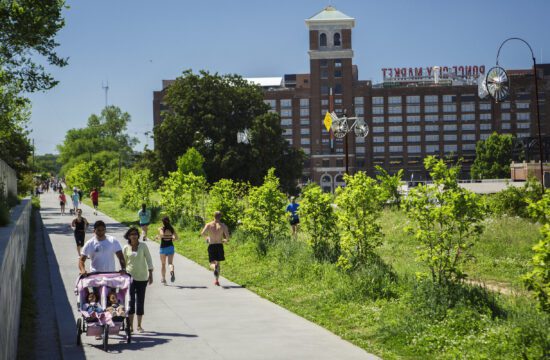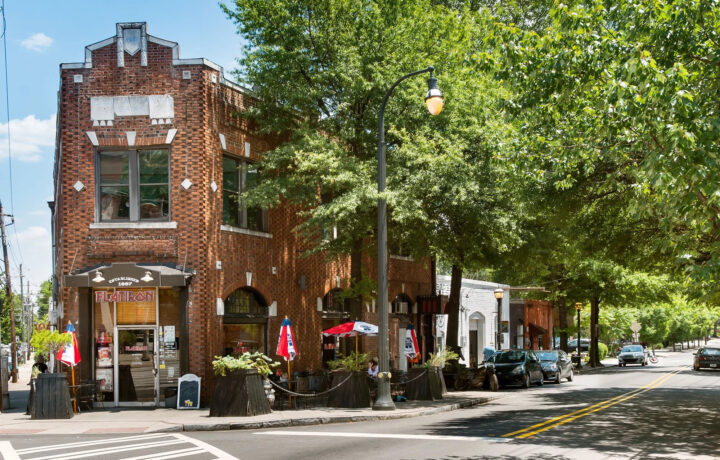Atlanta Bike Commuting: Complete Guide to BeltLine Routes & Safety Tips

Atlanta’s cycling infrastructure has experienced explosive growth, with the Atlanta BeltLine transforming bike commuting from a niche activity into a mainstream transportation option. This comprehensive guide covers everything you need to know about cycling Atlanta’s premier trails, essential safety protocols, and the best commuter routes for both beginners and experienced cyclists.
The Atlanta BeltLine: Atlanta’s Premier Cycling Network
The Atlanta BeltLine represents the largest urban redevelopment project in the United States, featuring a 22-mile loop of multi-use trails that circle Atlanta’s urban core. For bike commuters, this infrastructure provides safe, car-free routes connecting major employment centers, residential neighborhoods, and transit hubs.
Essential BeltLine Segments for Daily Commuters
Eastside Trail (3 miles) – The Commuter’s Highway This flagship segment connects Piedmont Park to Reynoldstown, serving as Atlanta’s busiest cycling corridor. Key commuter destinations include:
- Ponce City Market (major employment hub)
- Virginia-Highland business district
- Inman Park restaurants and offices
- Direct access to Midtown and Downtown Atlanta
Westside Trail (3 miles) – Growing Business Corridor Extending from Washington Park to Lena Street, this trail serves Atlanta’s rapidly developing Westside:
- Microsoft’s Atlanta campus access
- Westside Provisions District
- Mercedes-Benz Stadium connectivity
- Growing tech and creative industry hubs
Northside Trail (1.5 miles) – Midtown Connector Though shorter, this segment provides crucial north-south connectivity:
- Piedmont Park to Ansley Park link
- Access to Midtown’s business district
- Connection to MARTA Arts Center Station
Southwest Connector Trail (1.2 miles) – Network Integration This newer segment creates seamless multi-neighborhood connectivity:
- Links Westside and Southside trails
- Serves emerging residential developments
- Provides alternative routes during peak hours
Beyond the BeltLine: Atlanta’s Extended Cycling Network
PATH Foundation Trails – Regional Connectivity
Stone Mountain Trail (19 miles) Georgia’s most popular rail-trail offers suburban commuting options:
- Connects to multiple MARTA stations
- Serves Decatur and eastern suburbs
- Well-maintained with regular security patrols
Silver Comet Trail (61.5 miles) While primarily recreational, northern sections serve Cobb County commuters:
- Connects to Marietta business district
- Links residential areas to employment centers
- Features consistent paving and minimal road crossings
Neighborhood Connector Routes
606 Greenway (2.2 miles) Extends BeltLine connectivity into DeKalb County:
- Direct Decatur access from Eastside Trail
- Serves Emory University area
- Connects to additional local bike lanes
Comprehensive Safety Guide for Atlanta Bike Commuters
Essential Safety Equipment – Legal Requirements & Best Practices
Mandatory Lighting (Georgia Code 40-6-296)
- Front white light visible from 300 feet
- Rear red reflector or light visible from 300 feet
- Required from sunset to sunrise and during low visibility
Helmet Recommendations While only required for riders under 16, the Georgia Department of Transportation strongly recommends helmets for all cyclists:
- CPSC or Snell certified models
- Proper fit with minimal movement
- Replace every 3-5 years or after any impact
Visibility Enhancement
- Reflective vest or clothing during dawn/dusk hours
- Bright colors during daylight commuting
- LED accessories for additional visibility
- Reflective tire sidewalls or spoke lights
Trail Etiquette & Multi-Use Path Navigation
BeltLine Traffic Management With over 2 million annual users, proper etiquette ensures safety:
- Maintain right-side positioning
- Announce passes with “On your left”
- Reduce speed in high-pedestrian areas
- Use bell or voice for alerts
- Dismount during extreme congestion
Peak Hour Strategies
- Avoid 7-9 AM and 5-7 PM for recreational riding
- Use alternative routes during special events
- Consider flexible work schedules to avoid crowds
- Monitor BeltLine social media for closure updates
Street Cycling Safety – Urban Navigation
Georgia Traffic Law Compliance Cyclists have the same rights and responsibilities as motor vehicles:
- Ride in the direction of traffic flow
- Obey all traffic control devices
- Use appropriate lane positioning
- Signal turns and stops clearly
Defensive Riding Techniques
- Door Zone Awareness: Maintain 3-4 foot buffer from parked cars
- Intersection Safety: Make eye contact with drivers
- Visibility Positioning: Avoid blind spots
- Predictable Movement: Ride in straight lines, signal intentions
Seasonal Cycling Strategies for Atlanta’s Climate
Summer Commuting (May-September)
Atlanta’s hot, humid summers require specific adaptations:
- Hydration: Carry 20-24 oz water minimum
- Timing: Start before 7 AM to avoid peak heat
- Clothing: Moisture-wicking, light-colored fabrics
- Weather Monitoring: Afternoon thunderstorm awareness
Winter Preparation (December-February)
Mild winters still present challenges:
- Layering System: Base layer, insulating layer, wind shell
- Lighting: Extended use due to shorter daylight
- Surface Conditions: Ice possible on bridges and shaded areas
- Maintenance: Increased cleaning due to road salt
Multimodal Integration – Combining Cycling with Public Transit
MARTA Bike Integration
The Metropolitan Atlanta Rapid Transit Authority accommodates cyclists:
- Bike Parking: Secure facilities at 35+ stations
- Train Transport: Bikes allowed during off-peak hours
- Folding Bikes: Permitted at all times
- Bus Racks: Front-mounted racks on all buses
Strategic Park-and-Ride Locations
- Lindbergh Center: BeltLine access + MARTA connectivity
- Arts Center: Midtown employment access
- Decatur: Eastern suburbs connection point
- Dunwoody: Northern suburbs integration
Building Your Commuter Setup
Bike Selection for Atlanta Commuting
- Hybrid Bikes: Versatile for trails and streets
- Electric Bikes: Assistance for hills and longer distances
- Folding Bikes: MARTA integration convenience
- Commuter-Specific Features: Fenders, lights, cargo capacity
Workplace Integration
- Employer Advocacy: Request bike parking and shower facilities
- Clothing Strategy: Office clothes storage or cycling-specific attire
- Route Optimization: Minimize hills and high-traffic exposure
- Backup Transportation: Weather contingency planning
Atlanta’s Cycling Community & Advocacy
Local Organizations
- Atlanta Bicycle Coalition: Advocacy and group rides
- Neighborhood cycling groups: Route sharing and safety
- Online communities: Real-time conditions and tips
Infrastructure Development
Support continued growth through:
- Public meeting participation
- Maintenance issue reporting
- Local business support
- Policy advocacy
Future Developments – Atlanta’s Cycling Vision
Planned BeltLine Expansions
- Northeast Trail: Completion by 2030
- Southeast Trail: Development underway
- Additional connectors: Neighborhood integration
- Enhanced amenities: Improved lighting and security
City-Wide Initiatives
- Protected bike lane network expansion
- Bike share program enhancement
- Complete streets policy implementation
- Regional trail connectivity projects
Getting Started: Your First Atlanta Bike Commute
Phase 1: Route Planning (Week 1)
- Weekend reconnaissance: Test timing and identify challenges
- Distance assessment: Start with shorter segments
- Equipment check: Ensure all safety gear functions properly
- Weather monitoring: Understand seasonal patterns
Phase 2: Skill Building (Weeks 2-4)
- Gradual distance increases: Build endurance progressively
- Peak hour practice: Experience actual commute conditions
- Mechanical skills: Basic maintenance and repair knowledge
- Community connection: Join local cycling groups
Phase 3: Routine Establishment (Month 2+)
- Consistent scheduling: Regular departure times
- Equipment optimization: Upgrade based on experience
- Route diversification: Multiple options for variety
- Advocacy participation: Support infrastructure improvements
Conclusion: Atlanta’s Cycling Revolution
Atlanta’s transformation into a cycling-friendly metropolis accelerates daily, with the BeltLine serving as the catalyst for broader infrastructure development. By choosing bike commuting, you join a growing movement that’s reshaping urban transportation while improving personal health and environmental sustainability.
The combination of dedicated trails, improving street infrastructure, and strong community support makes Atlanta increasingly viable for car-free commuting. Whether you’re navigating the bustling Eastside Trail or exploring quieter neighborhood connectors, Atlanta offers diverse options for cyclists of all skill levels.
Start your Atlanta cycling journey today—the city’s best experiences await on two wheels.


